The good thing about living in Houston is that if you don’t have a car, you can travel from point A to point B by metro or car sharing services such as Uber and other private car companies. Even then, if you don’t have a car and need to get somewhere immediately it can be pretty expensive taking Uber periodically. I decided to invest into buying a used car, after not having a car in over a year I needed to move around when I needed to. If buying a new car is a hassle, buying a used car is even more of a hassle. I wanted to share a few tips that can help you into buying a good used car since not everyone can afford new.
 Set your budget. When deciding to make the purchase, figure out the maximum amount that you want to spend and don’t forget that when you buy a car from someone, you’ll need to pay tax,title, and tags also. If you buy a car that is about $5000 for example, you’ll probably pay up to $575 to put everything under your name, so in reality you’ll be spending close $5600 near the end, so keep that in mind.
Set your budget. When deciding to make the purchase, figure out the maximum amount that you want to spend and don’t forget that when you buy a car from someone, you’ll need to pay tax,title, and tags also. If you buy a car that is about $5000 for example, you’ll probably pay up to $575 to put everything under your name, so in reality you’ll be spending close $5600 near the end, so keep that in mind.
 Multiple Selection. You may have a car already in mind, but the car you want may not always be the one you end up with, so having a few extra choices is definitely something you should consider.
Multiple Selection. You may have a car already in mind, but the car you want may not always be the one you end up with, so having a few extra choices is definitely something you should consider.
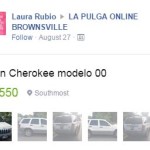 Searching. There’s a lot of difference resources out there, The Bargain Book, Craigslist, Online Pulga Pages, Buy/Sell Car Groups, Car Sales magazines you can find at stripes, and the traditional way, driving to car lots.
Searching. There’s a lot of difference resources out there, The Bargain Book, Craigslist, Online Pulga Pages, Buy/Sell Car Groups, Car Sales magazines you can find at stripes, and the traditional way, driving to car lots.
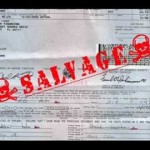 Clear vs Salvage Title. When buying a car, it is good to know the differences between a a clear title and salvage title. A car that has had a normal life, meaning that it’s never been in a serious accident, never had the odometer rolled back and was never bought back by the manufacturer because of a defect, it’s said to have a clean title. That title is free of any title brands that denote special status and warn potential buyers of a possible problem or issue with the car. A salvage title on the other hand means the car had an accident and the insurance company declared the car a total loss because the repairs where to expensive to fix and the cars are issued a “salvage title”. Now just because a car has a salvage title, doesn’t mean they are not worth buying since most of the cars with salvage title are a lot less expensive than buying cars with clean titles, if you don’t plan on selling that used car then maybe buying a salvage title may be a consideration. If you plan on buying a car with salvage title and selling it 2 years later, you probably will have a hard time selling it as many people who buy privately don’t look for cars with salvage title. Me personally, I would probably stay away from a salvage titled car, mostly because even though the car looks to be repaired, it’s hard to find out exactly what kind of repairs where made and how good the repairs were. If you don’t have extra bucks to spend on a mechanic to actually check everything out for you and tell you that the repair is excellent, I would pass on these cars.
Clear vs Salvage Title. When buying a car, it is good to know the differences between a a clear title and salvage title. A car that has had a normal life, meaning that it’s never been in a serious accident, never had the odometer rolled back and was never bought back by the manufacturer because of a defect, it’s said to have a clean title. That title is free of any title brands that denote special status and warn potential buyers of a possible problem or issue with the car. A salvage title on the other hand means the car had an accident and the insurance company declared the car a total loss because the repairs where to expensive to fix and the cars are issued a “salvage title”. Now just because a car has a salvage title, doesn’t mean they are not worth buying since most of the cars with salvage title are a lot less expensive than buying cars with clean titles, if you don’t plan on selling that used car then maybe buying a salvage title may be a consideration. If you plan on buying a car with salvage title and selling it 2 years later, you probably will have a hard time selling it as many people who buy privately don’t look for cars with salvage title. Me personally, I would probably stay away from a salvage titled car, mostly because even though the car looks to be repaired, it’s hard to find out exactly what kind of repairs where made and how good the repairs were. If you don’t have extra bucks to spend on a mechanic to actually check everything out for you and tell you that the repair is excellent, I would pass on these cars.
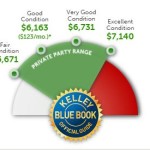 Find out the value. Before you see the car you’re interesting in, find out how much those cars are actually going for. One place to start is use the Kelly Blue Book website, www.kbb.com. It allows you to see a range of prices for a car from fair to excellent condition and this allows you to have a general idea of what that particular car is going for. Once you have the KBB price, I would further compare prices of that same car on Craigslist in other Texas cities such as McAllen, Corpus, Houston, Dallas etc. The better informed you are, you can make a reasonable offer when it comes down to haggling.
Find out the value. Before you see the car you’re interesting in, find out how much those cars are actually going for. One place to start is use the Kelly Blue Book website, www.kbb.com. It allows you to see a range of prices for a car from fair to excellent condition and this allows you to have a general idea of what that particular car is going for. Once you have the KBB price, I would further compare prices of that same car on Craigslist in other Texas cities such as McAllen, Corpus, Houston, Dallas etc. The better informed you are, you can make a reasonable offer when it comes down to haggling.
 The test drive. When you arrive at the person’s place, ask the person what their asking price of the car is. Once you know how much they want for the car, ask for the keys and take a spin. When you’re driving some of the easiest things to check are acceleration and breaking. When you step on the gas, does the car take off or does it stall a little bit? Don’t be afraid to put your foot all the way down and drive fast in short bursts, this allows you to feel the car as it changes gears, does it feel smooth? When you’re driving in a straight line, does the car veer left or right? If it does this could be signs of bad alignment, over inflated or under deflated tires, rack and pinion or suspension issues to name a few. How do the breaks feel? When slowing down, pay attention to any noises or any vibrations in your foot as you break. I would suggest also driving to about 35mph or 40mph and coming to a complete emergency stop, the tires may screech a little but at least you can find out if the breaks are in good working order. What about the suspension? Find some speed bumps and go over them at a safe speed and see how smooth the suspension is. Look at the temperature gauge, it should typically around the half way mark once the car has warmed up. You may want to try taking the car on the highway if possible, sometimes some problems are not noticeable when taking a short distance ride. If you can, take a friend or family member with you to provide an opinion other than your own.
The test drive. When you arrive at the person’s place, ask the person what their asking price of the car is. Once you know how much they want for the car, ask for the keys and take a spin. When you’re driving some of the easiest things to check are acceleration and breaking. When you step on the gas, does the car take off or does it stall a little bit? Don’t be afraid to put your foot all the way down and drive fast in short bursts, this allows you to feel the car as it changes gears, does it feel smooth? When you’re driving in a straight line, does the car veer left or right? If it does this could be signs of bad alignment, over inflated or under deflated tires, rack and pinion or suspension issues to name a few. How do the breaks feel? When slowing down, pay attention to any noises or any vibrations in your foot as you break. I would suggest also driving to about 35mph or 40mph and coming to a complete emergency stop, the tires may screech a little but at least you can find out if the breaks are in good working order. What about the suspension? Find some speed bumps and go over them at a safe speed and see how smooth the suspension is. Look at the temperature gauge, it should typically around the half way mark once the car has warmed up. You may want to try taking the car on the highway if possible, sometimes some problems are not noticeable when taking a short distance ride. If you can, take a friend or family member with you to provide an opinion other than your own.
You drive the car back and decide, well the car seemed good time to buy it but wait, they are still plenty of other things you’ll need to check before you make an offer. Like I said, buying a used car is no easy task.
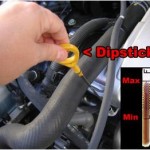 Checking the oil. Ask the person when was the last oil change, usually they will all tell you “Just changed it not to long ago” but you can’t take anyone’s word for it so you’ll have to get dirty a little bit. Pop open the trunk and check the dipstick, typically if the car is in good working condition the oil level should be normal and the color of the oil will usually be light brown, if the dipstick is low and the color of the oil is dark black this may indicate some issues such as the car consuming too much oil or it was very long ago since the last oil change. Also checking under the oil cap, does the cap have any black carbon deposits? You should see a little bit of the internal workings of the engine, does it look dirty? if so this is not a good sign. A clean working engine will look clean from the inside too. One last place to check, is right under the car, does it look like its leaking oil? If it’s leaking oil this could be a faulty gasket or other.
Checking the oil. Ask the person when was the last oil change, usually they will all tell you “Just changed it not to long ago” but you can’t take anyone’s word for it so you’ll have to get dirty a little bit. Pop open the trunk and check the dipstick, typically if the car is in good working condition the oil level should be normal and the color of the oil will usually be light brown, if the dipstick is low and the color of the oil is dark black this may indicate some issues such as the car consuming too much oil or it was very long ago since the last oil change. Also checking under the oil cap, does the cap have any black carbon deposits? You should see a little bit of the internal workings of the engine, does it look dirty? if so this is not a good sign. A clean working engine will look clean from the inside too. One last place to check, is right under the car, does it look like its leaking oil? If it’s leaking oil this could be a faulty gasket or other.
 Check suspension. Checking the suspension is a little bit harder however a few simple things you can check and look out for will be the following. One was the test drive by going over some bumps and humps and seeing how smooth the car is. One thing you can do with the car stopped is put your weight on any corner, if it bounces more than once then more than likely you’ll need to replace the shocks or struts on that car and that will usually run you a few hundred bucks. If there wasn’t any alteration in aftermarket parts, the car should usually have a decent sized gap between the car frame and the tire, any sagging may indicate bad suspension.
Check suspension. Checking the suspension is a little bit harder however a few simple things you can check and look out for will be the following. One was the test drive by going over some bumps and humps and seeing how smooth the car is. One thing you can do with the car stopped is put your weight on any corner, if it bounces more than once then more than likely you’ll need to replace the shocks or struts on that car and that will usually run you a few hundred bucks. If there wasn’t any alteration in aftermarket parts, the car should usually have a decent sized gap between the car frame and the tire, any sagging may indicate bad suspension.
Check tires. Tires vary in sizes and replacing all 4 tires with new ones are pretty expensive. A new tire can cost you $100 an up and if you’re going to change one, typically you’ll want to change the other side also. Checking for tread is the easiest thing you can do. Take a penny and put Lincoln’s head upside down facing you in between the treads, if the president’s head dissapears between the treads, the tire is considered normal. If you can see his entire head, you’ll need to replace these tires soon because the tread is no longer deep enough for good traction control. You may be able to lower the cost of the car when making your offer, so keep this in mind.
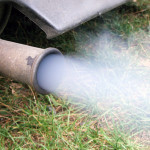 Checking the exhaust. A car uses oil to keep the internal parts lubricated and run efficiently. A car that burns oil will cause the exhaust to blow smoke. If it does blow smoke I would suggest staying away as fixing an engine is quiet expensive.
Checking the exhaust. A car uses oil to keep the internal parts lubricated and run efficiently. A car that burns oil will cause the exhaust to blow smoke. If it does blow smoke I would suggest staying away as fixing an engine is quiet expensive.
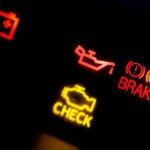 Check engine lights. From all the warning lights a car has, the most important one is the check engine light. The check engine light can come on from forgetting to put your gas cap back on, to a faulty oxygen sensor to more serious problems like a catalytic converter, ignition coil, cylinder misfires, spark plug and wires… etc. If when you test drive a car and this is on, make sure you ask the seller if they know anything about it, usually they’ll say “It’s always been on, it works fine” and sometimes this could be true, but you can take a quick trip to the nearest autozone or advanced auto parts and have them run a free diagnostic with their computer tool. Once you know the error code, they can tell you how much it will cost to replace the cost. You still may want to get this checked out professionally by a mechanic as sometimes not every reading on the computer tool is 100% accurate and can be sometimes caused by a faulty sensor somewhere.
Check engine lights. From all the warning lights a car has, the most important one is the check engine light. The check engine light can come on from forgetting to put your gas cap back on, to a faulty oxygen sensor to more serious problems like a catalytic converter, ignition coil, cylinder misfires, spark plug and wires… etc. If when you test drive a car and this is on, make sure you ask the seller if they know anything about it, usually they’ll say “It’s always been on, it works fine” and sometimes this could be true, but you can take a quick trip to the nearest autozone or advanced auto parts and have them run a free diagnostic with their computer tool. Once you know the error code, they can tell you how much it will cost to replace the cost. You still may want to get this checked out professionally by a mechanic as sometimes not every reading on the computer tool is 100% accurate and can be sometimes caused by a faulty sensor somewhere.
Making an offer. So you finally checked everything out and think the car is worth purchasing. The seller wants to make the most money and you as the buyer wants to spend as little as possible, You checked the KBB and found out what prices the car is going for and in addition you checked craigslist in other cities to narrow down the best price. Before you make your first offer, ask the seller what is the least they can take, if you have a car that the seller was originally asking for $5300 bux, he/she may lower it to $5000. You already knocked off $300 bucks just by asking, so be ready to prepare your first offer. Usually for my first offer I’ll try to low ball the seller, I’ll offer $3500 just to test the waters, the seller may brush it off but at least it’s a good starting point to see if the seller will go even less then they already did. My second offer will be more serious and a reasonable, I’ll pitch $4000 cash and see what the seller says. Most people selling a used car need the money and can’t afford to have the car sitting around for long so they will usually make a counter offer. The seller may lower the price to about $100 and you’re at $4900. You’re ready to make your 2nd offer, this time you’ll want to try pitch $4300 (Trying to get close to $4500), the seller may tell you the first counter-offer they made is the best offer available, but trust me when you have cash in hand, you can bargain. At this point you already made two offers and need to make a final offer. I would make an offer of $4500 and tell the seller “Let’s settle for $4500, this is all I have” and in reality this is as much as you want to spend. Now the seller may decide that the offer you made was good and take the money or can give you a final counter offer, he may lower the price maybe by an extra 100 bucks and be at $4800. If this is a reasonable price for what you want to pay for this car, then you can seal the deal.
 Sealing the deal. Once you settle on the price that both parties can agree to, make sure you ask for the person’s license or ID and take a picture on your phone. If it’s a private party make sure you get the original title and not a copy. If you’re buying from a dealer, make sure you ask for a business card, take license, get a bill of a sale, ask if he works for a car lot and if so google the company and see if it’s legit, also take a picture of his dealer ID. Make sure you always ask for a receipt. Shake hands and your off with a new car.
Sealing the deal. Once you settle on the price that both parties can agree to, make sure you ask for the person’s license or ID and take a picture on your phone. If it’s a private party make sure you get the original title and not a copy. If you’re buying from a dealer, make sure you ask for a business card, take license, get a bill of a sale, ask if he works for a car lot and if so google the company and see if it’s legit, also take a picture of his dealer ID. Make sure you always ask for a receipt. Shake hands and your off with a new car.
Buying a used car takes a lot more time and when making the deal you feel something doesn’t feel right, then don’t do it. Once you buy a used car, you won’t be able to return it since it’s going to be “as is” There’s a car out there waiting for you, sometimes it takes a little bit of time and patience and researching. Hopefully now that you know a little bit more, you can shop with confidence.
Hope you enjoyed this article.
Saludos Cordiales.


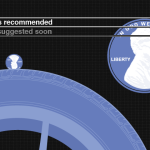

Be the first to comment